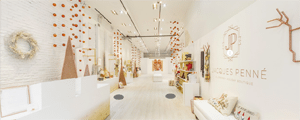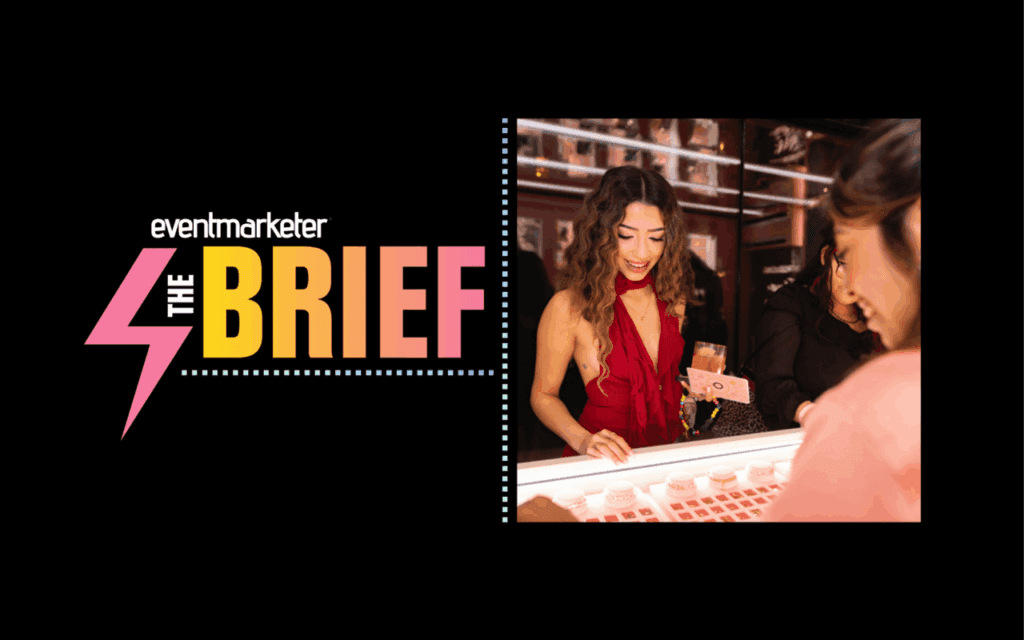Branded pop-up shops have taken off, with numerous companies opening short-term sales and experiential spaces in consumers’ favorite cities. Pop-up shops have given brands across industries the ability to engage fans in a unique way, proving the trend is here to stay. But executing a successful pop-up takes some careful planning. Here are a few tips marketers need to keep in mind for creating a pop-up experience that bolsters brand loyalty and engages consumers digitally.

1. Know your goals
Marketers should have a clear idea of what they want their pop-up shop to accomplish. Are you looking to highlight a new product? Test a different market? Or build rapport with an existing fan base? A pop-up can accomplish all these things, but it’s crucial to understand your overarching goals early on. Designing a winning pop-up shop is a big undertaking, so avoid dedicating time and resources for the sake of the trend.
2. Consider timing
Next, think about when your pop-up will run. The winter months have proven to be a great time to host a holiday-themed pop-up; however, you might also build your shop around a popular event, such as a food festival, concert, or maybe even New York Fashion Week. Aligning your pop-up with a particular season or event lets consumers connect with your brand in an even more impactful way.
3. Partner creatively
When Herschel created a pop-up in Vancouver, they partnered with a local juice truck in order to further differentiate the experience, expertly combining two unrelated ideas: backpacks and lemonade. Meanwhile, beauty sample delivery box subscription, Birchbox, joined forces with Gap to bring their online service to a wider audience in brick-and-mortar stores. The best pop-ups group several ideas to produce an experience that can’t be found anywhere else. Think about any partnerships you can lean on in order to make your pop-up pop—and cut costs, too!
4. Put your brand in bold
Pop-up shops are a great chance to thoroughly showcase your brand. Think of a branded hashtag for visitors to use when sharing their experience on social media. This will drum up excitement among consumers, and provide your brand with an invaluable cache of user-generated content. Perhaps your pop-up features a branded Snapchat geofilter to boost your company’s presence on a set channel, or a photo shoot on a fun, branded set. The options for making your brand stand out are endless.
5. Wow, but don’t overwhelm
A pop-up’s design should stimulate consumers without overwhelming them. Refinery29’s pop-up funhouse made headlines not only because it was timed around New York Fashion Week and included multiple brands, from Ulta to Dunkin’ Donuts, but mostly because the playful, made-for-Instagram set dazzled its 18,000 visitors. Wow consumers with an unforgettable atmosphere they’ll want to instantly share on social media, but be sure to strike a balance so they aren’t confused.
6. Remember the little things
Speaking of confusion, don’t lose sight of the smaller details amidst the planning fun. A colorful, interactive shop will draw consumers in and inspire them to connect with your brand on a deeper level. But a poorly planned pop-up will turn visitors off. The little things – an intuitive layout, friendly staff, and a hassle-free location – go a long way in ensuring visitors have an enjoyable experience they’ll brag about for weeks.
7. Go digital
Pop-up shops are only the first step in creating a relationship with consumers. Beyond the logistics, brands need to establish a plan for connecting with visitors long after they’ve left the experience. One way to accomplish this is by leveraging digital rewards.
Rewarding attendees with digital coupons, or the chance to enter a sweepstake, is a great way to inspire repeat engagement with brands. Alternatively, companies that set up branded photo shoots will find that taking pictures for visitors and sharing them via text message or email gives your brand the opportunity to collect additional consumer data that can be used for future outreach.
8. Measure for success
Find tangible ways to gauge the success your pop-up shop. Monitoring the number of coupons redeemed or email addresses collected is an easy way to also measure the success of your experience. However, brands can also take a more creative approach. Try organizing a contest or game of trivia related to your pop-up and housed on your company’s mobile app. This not only helps your brand drive and track app downloads, but also opens another engagement channel for consumers.
9. Welcome feedback
Last but not least, figure out what worked. Listen to consumer feedback to learn what they liked most about your pop-up – and what they could’ve done without. Learn from any mistakes, and take note of the elements that made your pop-up a hit so you can set up shop all over again!
Meghan Holmes is vice president, strategy & insights at HelloWorld.
This article first appeared in December 2017 and has been updated regularly.
 Network
Network

